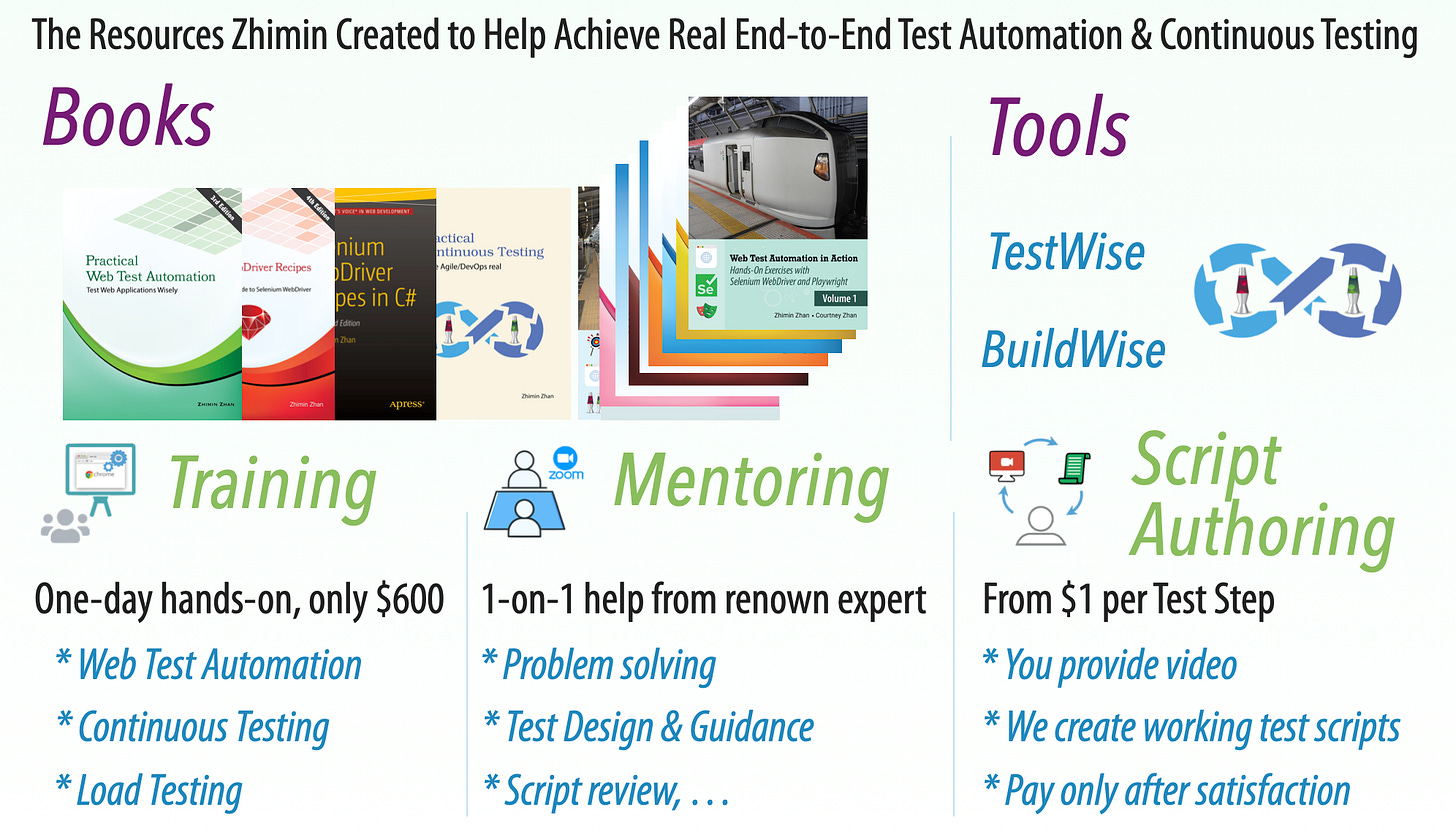Analysis of "4th Edition Software Testing & Quality Report" by TestRail. Part 3
Trends and Findings from a recent software testing survey.
Continue from Parts 1 & 2, more findings from the latest Software Testing & Quality Report (2025).
Finding 7: Manual testers still make up the majority of the software testing workforce.
Although most software projects have claimed to be “doing Agile” for over a decade, real end-to-end (E2E) test automation remains rare.
I'm not against manual testing, but in Agile projects that embrace constant and frequent change, shouldn’t E2E test automation play the leading role in the testing effort?
Check out my articles:
Finding 8: Most teams won’t seek external help.
Clearly, most software companies and teams still lack genuine E2E test automation capability, yet they seldom seek external help to close the gap. It is against common sense: “If you don’t know, learn from others”. Long-time readers will know I’ve raised this point repeatedly in my books and articles, and now this survey confirms it.
Yes, I’m a test automation coach—but recommending that most software teams engage an E2E test automation coach isn’t self-promotion; it’s simply stating a fact. It’s no different from a tennis coach telling parents, “If your child is serious about tennis, they need professional lessons.” Whether the parents choose that particular coach is entirely up to them.
A tip: engaging a real test automation coach is far more affordable than most software managers think. Fake ones are usually very expensive.
Finding 9: Lack of Learning and Training
As we all know, most universities don't offer courses on software testing, especially in areas like E2E test automation and Continuous Testing. So it's no surprise that the majority of people acquire these much-needed skills on the job (as shown above: 70% + 11%). Unless you're exceptionally lucky, the chances of working with a true test automation engineer (in whole career) are extremely slim, even at the world’s top tech companies.
“In my experience, great developers do not always make great testers, but great testers (who also have strong design skills) can make great developers. It’s a mindset and a passion. … They are gold”.
- Patrick Copeland, Google Senior Engineering Director, in an interview (2010)“95% of the time, 95% of test engineers will write bad GUI automation just because it’s a very difficult thing to do correctly”.
- this interview from Microsoft Test Guru Alan Page (2015), author of “How we test software at Microsoft”“Automated testing through the GUI is intuitive, seductive, and almost always wrong!” - Robert C. Martin, co-author of the Agile Manifesto, on his blog (in 2009)
“Testing is harder than developing. If you want to have good testing you need to put your best people in testing.”
- Gerald Weinberg, software legend, in a podcast (2018)
So, the only real path to mastering E2E test automation is through self-learning. This proactive mindset—backed by action, such as reading books, seeking mentors, and hands-on practice—will set you apart from the average.
Check out my articles:
Summary
Like dozens of software testing surveys/reports I’ve seen over the past two decades, the results of this latest 2025 one are much the same:
More Test Automation, especially in E2E (UI) regression testing
But lacking the capability
The E2E testing target (Web, Mobile, and API) barely changed over 10 years, yet most software teams still heavily rely on manual testing.
WebDriver (Selenium and Appium) automation framework is still the best, over a decade. Don’t be fooled by fancy new hypes.







